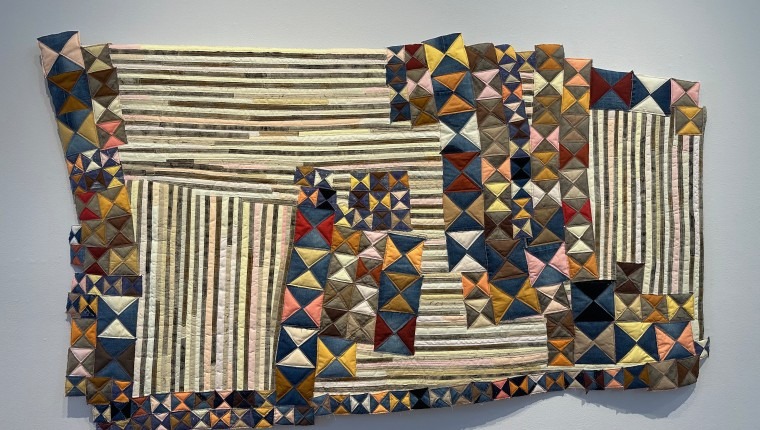Weaving, knitting, macrame, crochet, sewing, stitching, embroidery, dyeing, quilting, smocking, draping, pleating, appliqué… are some of the techniques and methods fabric artists use to manipulate their art material of choice.
Fabric artists, also known as fiber artists or textile artists, are born of a long venerable lineage.
The ancient Egyptian goddess, Neith, associated with the spider, wove the entire world into existence. And like the spider regularly reweaving its web, every day Neith reweaves the whole world.
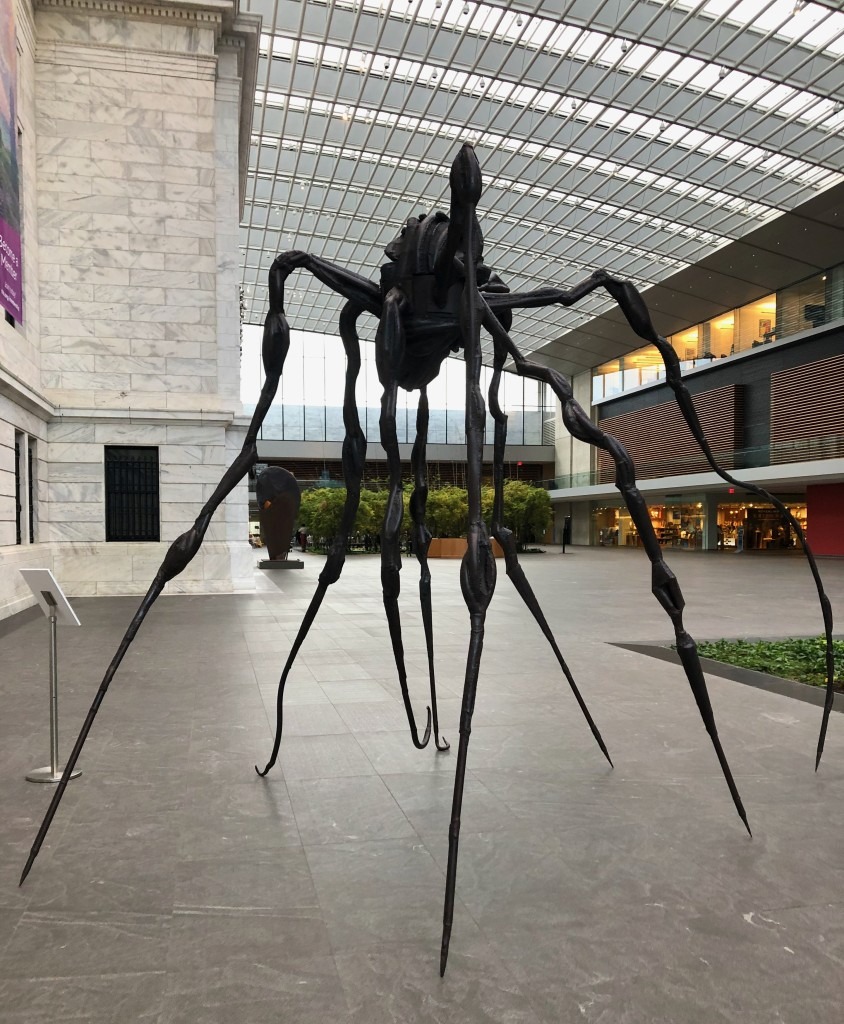
Stories of spider exploits abound – in Ghana, there’s Anansi, the spider with wisdom, knowledge and ingenuity; the Greek’s talented weaver, Arachne crossing paths with Athena; Spider Woman teaching weaving to the Navajo; even Odin of the Norse, transforming himself into a spider to weave webs of fate for his people. In ancient China, spiders were referred to as ximu 喜目, or happy insects.
Towards the end of her career, Louise Bourgeois made spider sculptures, from small brooch-size to monumental 30-feet tall arachnids. Both biographical and referencing her mother, they have become some of the most recognized sculptural forms around the world.
While not quite impossible, spider silk is extremely difficult to gather. In 2020, the Victoria and Albert Museum in London exhibited an extraordinary cape made from the silk of approximately 1.3 million golden orb spiders.
So weaving remains in the goddess’s domain.
Fortunately, within the world Neith wove into existence are material sources that are more easily processed into fabrics.
The oldest is flax from which we get linen for our linen closets. Cotton, “The fabric of our lives” – states a cotton industry ad. The sheep bleats – wool is the fabric of all lives. The cashmere goat rolls its eyes.
Besides flax, there’s jute, hemp, bamboo and a host of other fibrous plants.
Leather and silkworm silk, two results of the ultimate sacrifice.
And polyester, nylon, rayon – a growing number of synthetics and blends fill the rest of the shelves in fabric stores everywhere.
So these are some of the materials fabric artists work with.
Some of the results are on exhibit around this Central West Florida region. Here’s a short rundown. . .
Starting at the gateway to this region, Tampa International Airport. TIA has a developing public art program of over 30 pieces throughout its terminals, check in, baggage claim and all connecting facilities, welcoming and bidding bon voyage to travelers.

Probably most famous being the whimsical flamingo by Matthew Mazzotta, installed last year in the central terminal. A surreal and super fun illusion, encountering this big bird underwater while dragging one’s luggage.
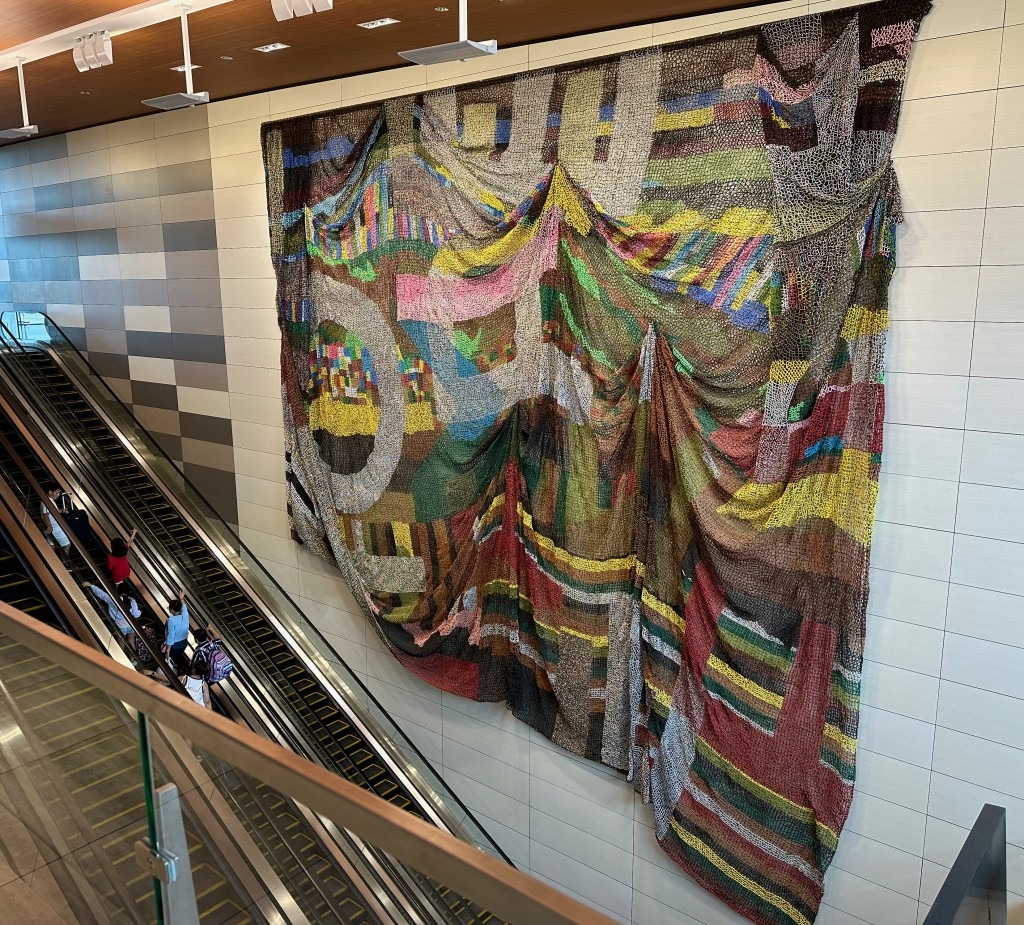
Fabric art is also represented. At the baggage claim are a series of wool tapestries, created in 1988 by 20 women weavers from Phumlalanga, Swaziland in Africa, using a design based on paintings by Ron Renmark.
Another massive tapestry Palimpsest by Nick Cave in collaboration with Bob Faust hangs over four stories of escalators in the rental car center. Woven with beads into a 45-feet by 70-feet long tapestry, draping folds of color and patterns recall memories, human connections, traces of home and distant places.
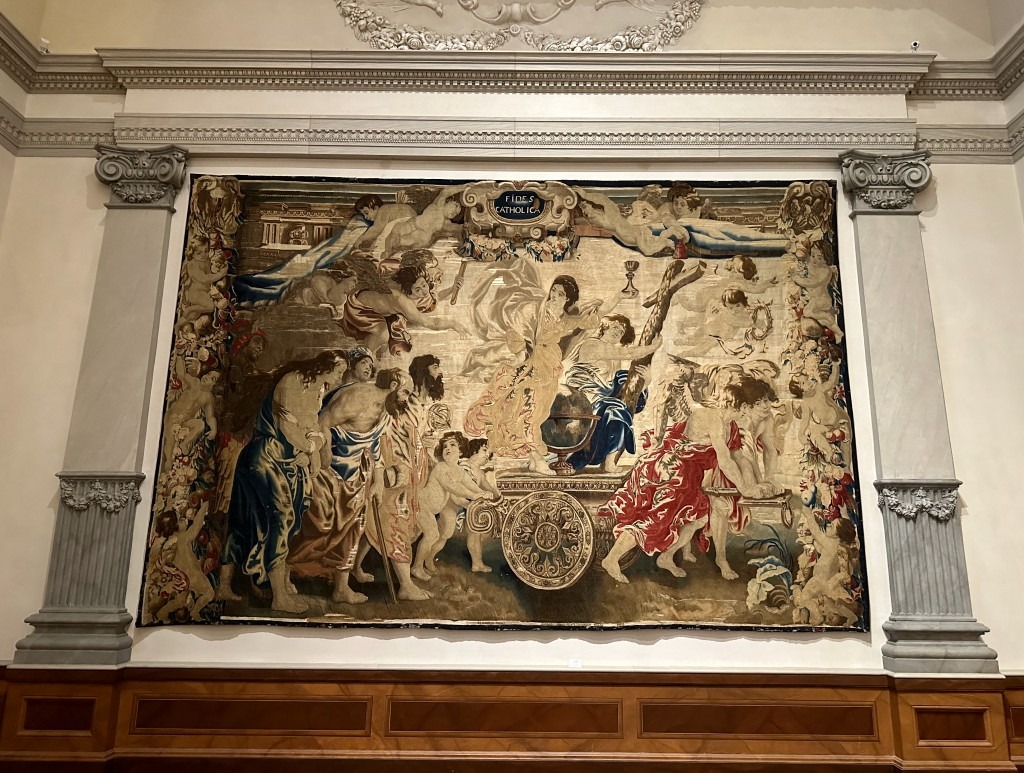
Heading south from the airport at Sarasota’s Ringling Museum of Art is a baroque style tapestry by Peter Paul Rubens which is based on a set of tapestries with the theme of the Eucharist, commissioned by his patron Isabella Clara Eugenia in 1625.
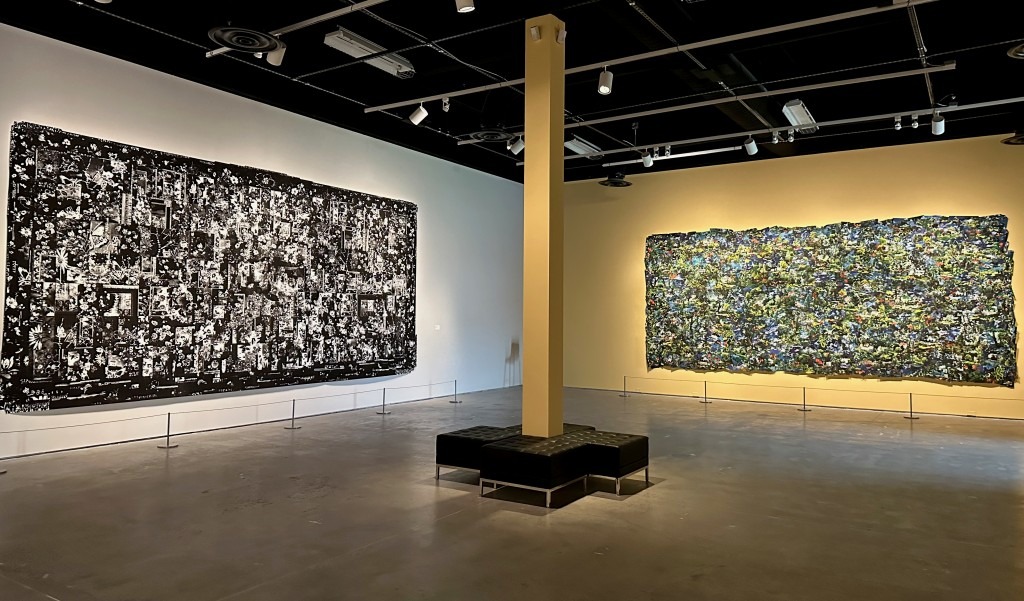
Diagonally from Rubens’ gallery, in another wing across the museum courtyard (where a full size replica of Michelangelo’s David stands), is artist Lorna Bieber’s exhibition Natural World.

While not technically fabric art, though one piece is titled Tapestry, they’re large wall hangings consisting of multitudes of photo images, as described in the didactic panel, “… she digitally photographs the work and has it produced on canvas, connecting her practice to the medieval tradition of tapestries and textile wall hangings.”
Across town, interesting twists on fabric materials were recently seen in the Sarasota Art Museum’s third floor galleries – A Beautiful Mess: Weavers & Knotters of the Vanguard.
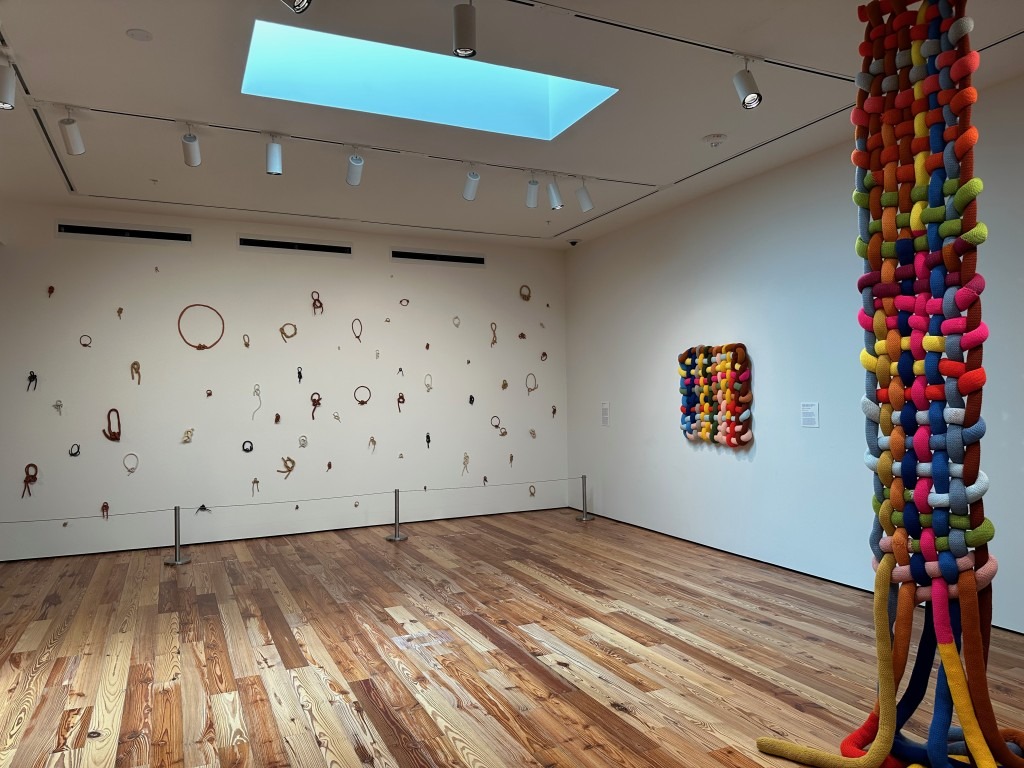
One of the artists, Hannah Perrin Mode’s Rope Team is a wall of knots. An arrangement of individual knots tied in rope of all lengths and thickness, like illustrations in a how-to manual.
Upon closer inspection, all the rope are actually rolled clay, a sculptural trompe l’oeil.

Another visual illusion are two untitled pieces by Dana Hemenway, unexpectedly turning extension cords into macrame ropes while retaining their function of carrying electricity.
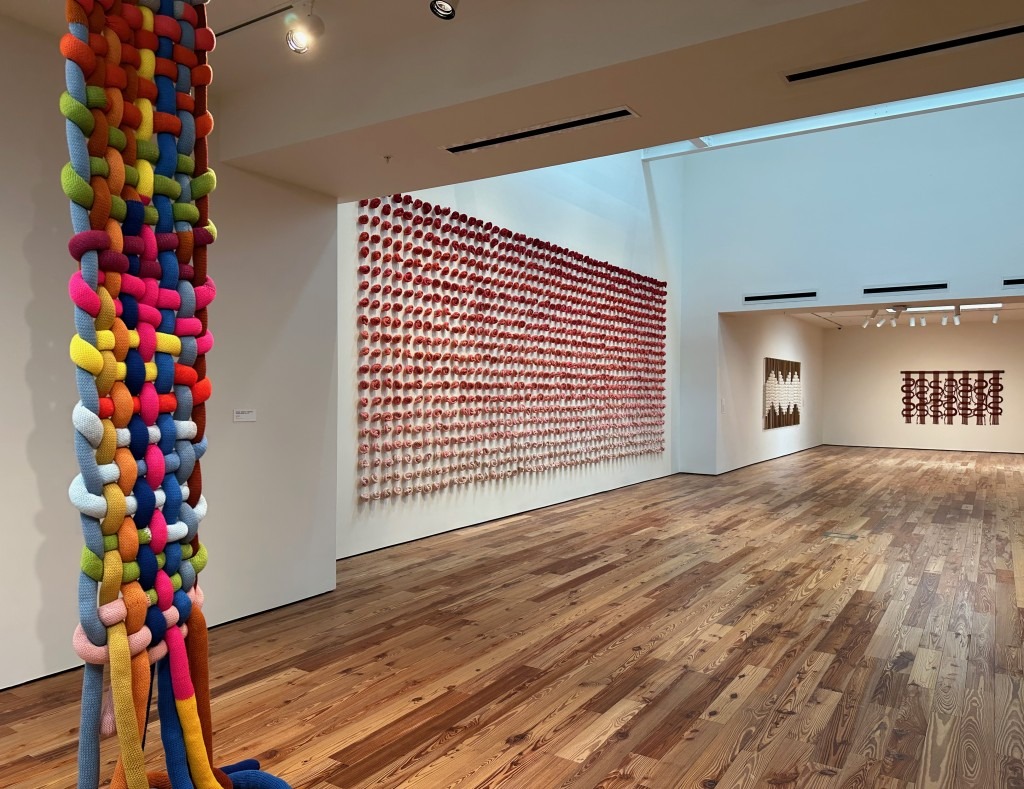
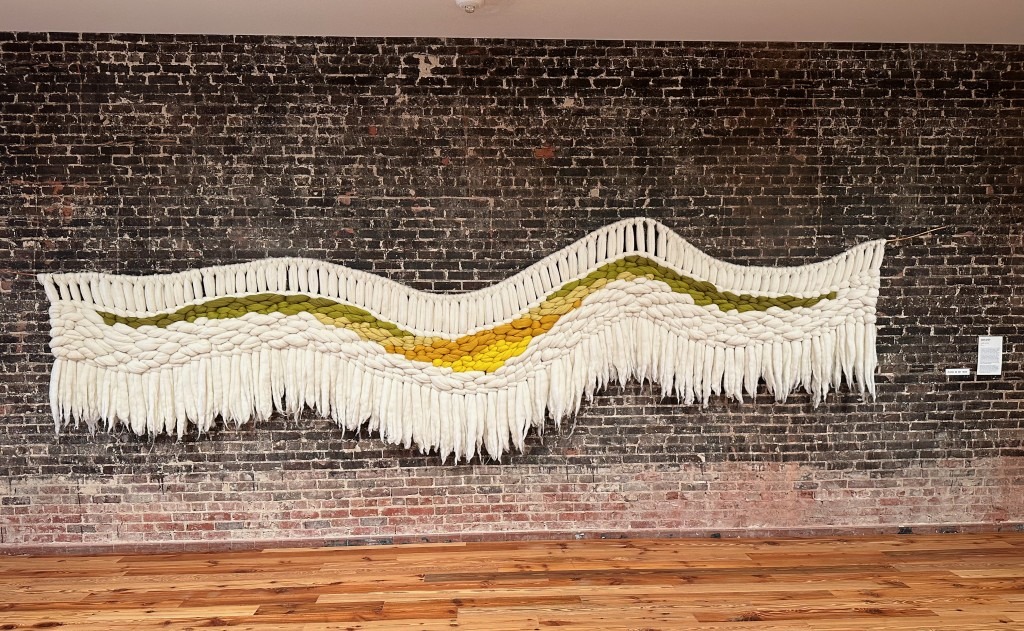
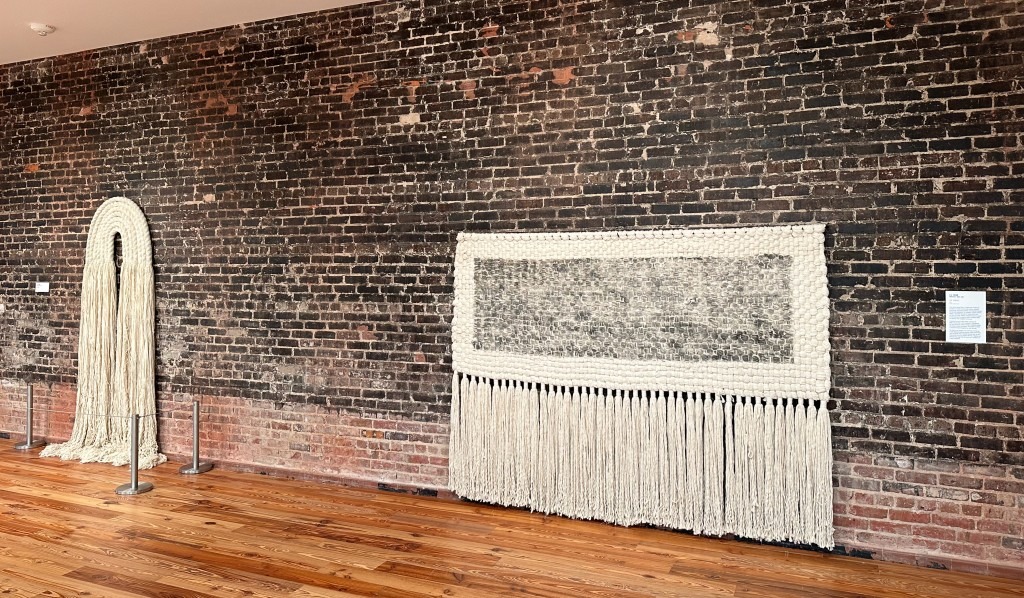
Overall, A Beautiful Mess shared poetic idiosyncrasies from 11 fabulous fabric artists. (Unfortunately this exhibition just closed.)
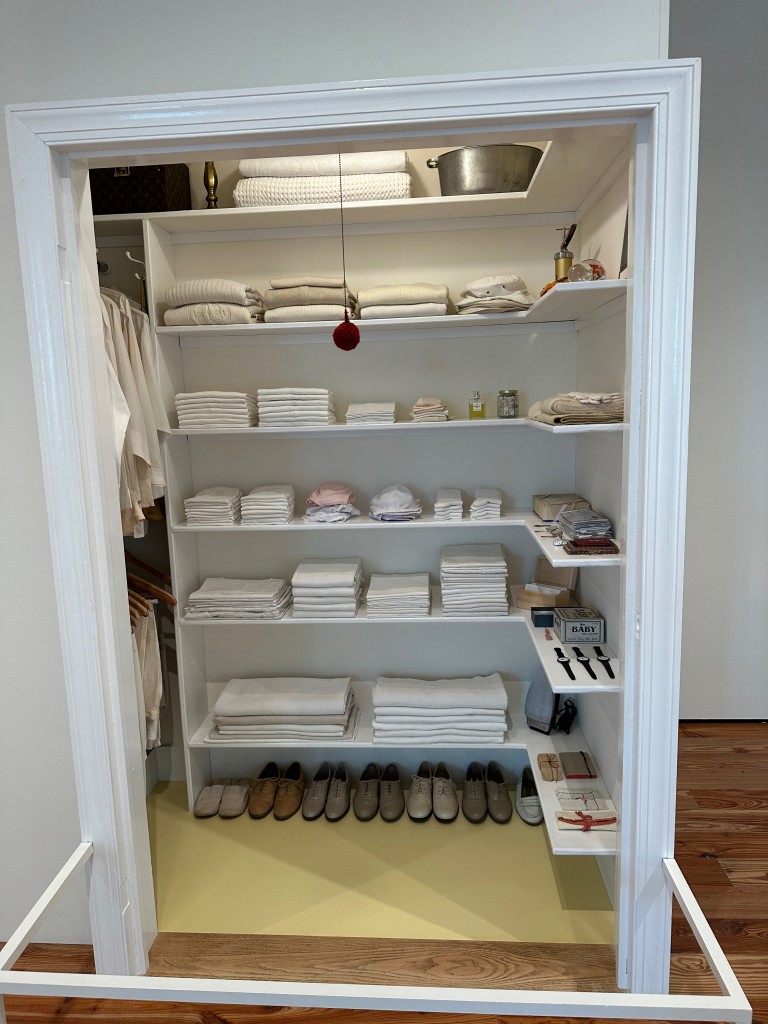
Tangential exhibits on the second floor of the Sarasota Art Museum – Sara Berman’s Closet (on view through September 17) is an ode to Sara Berman – who made a radical turn at age 60, packed a single suitcase, left her husband and old life, traveled across the ocean to America, settled into a studio apartment and decided to wear only white.

Creators of this installation are her daughter and grandson, artists and designers Maira and Alex Kalman. The focal point is Sara’s closet. From the exhibition text – “After Berman’s death in 2004, the Kalmans, inspired by the profound beauty and simplicity of her meticulously ordered closet, decided to preserve its contents: everything carefully starched, ironed, folded, and stacked.”
Along with the minimal closet, Maira Kalman made a series of Chagall-esque paintings imagined from Sara’s life.

At the other end of this second floor is an intriguing beaded curtain woven with hair and beads in shape of okra – part of a multimedia piece my papa used to play checkers by Stephanie J. Woods.
Here’s the second verse of the poem “In Africa, Okra is Gumbo” by Laura Neal that accompanies Woods’ installation –
I keep dreaming up new things to do with my hair.
I should sing a song to it, feed it a good meal.
In Africa, the word for okra is gumbo, we eat
Good on that crop. One pot feeds a lot of mouths
Once the sun is done spilling its heat. Even
Enough left over for tomorrow. And I never knew
Where I learned to tie these knots. I never thought
It could hold more than a shell.
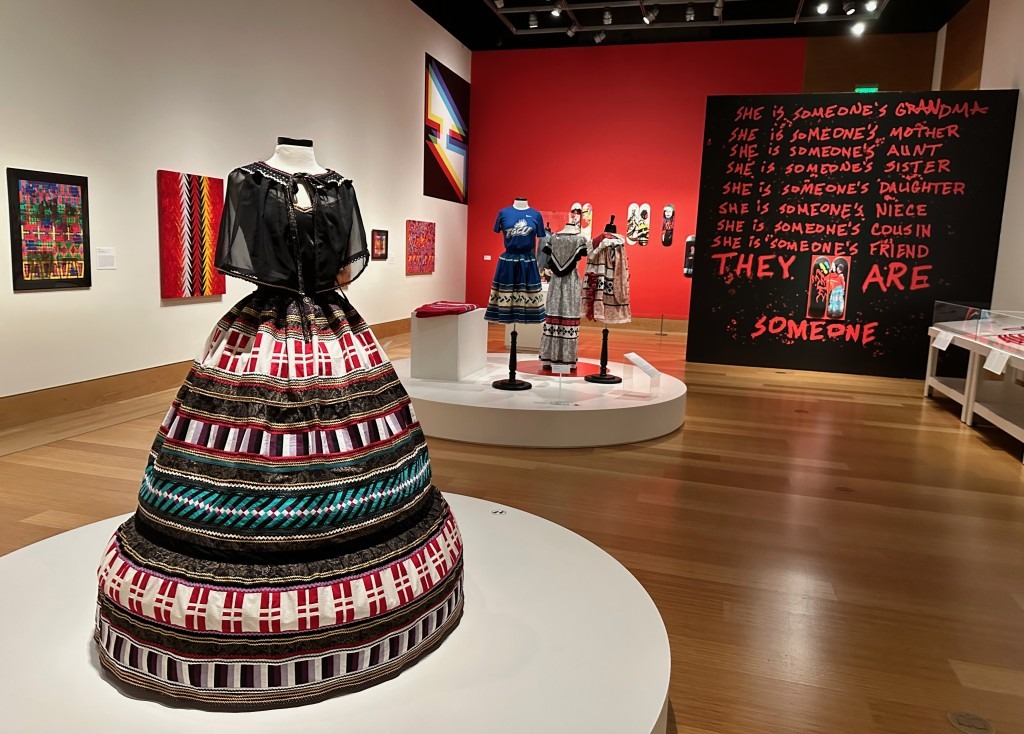
Swinging back to the Ringling, as in Sara Berman’s choice of wear – nothing expresses one’s identity as intimately as clothes – are the floor length hoop-style dresses using Seminole patchwork textile of contrasting horizontal bands, aspects of Seminole fashion by Jessica Osceola in Reclaiming Home: Contemporary Seminole Art, a group exhibition highlighting artworks of 12 Seminole, Miccosukee and mixed-heritage artists from Florida.
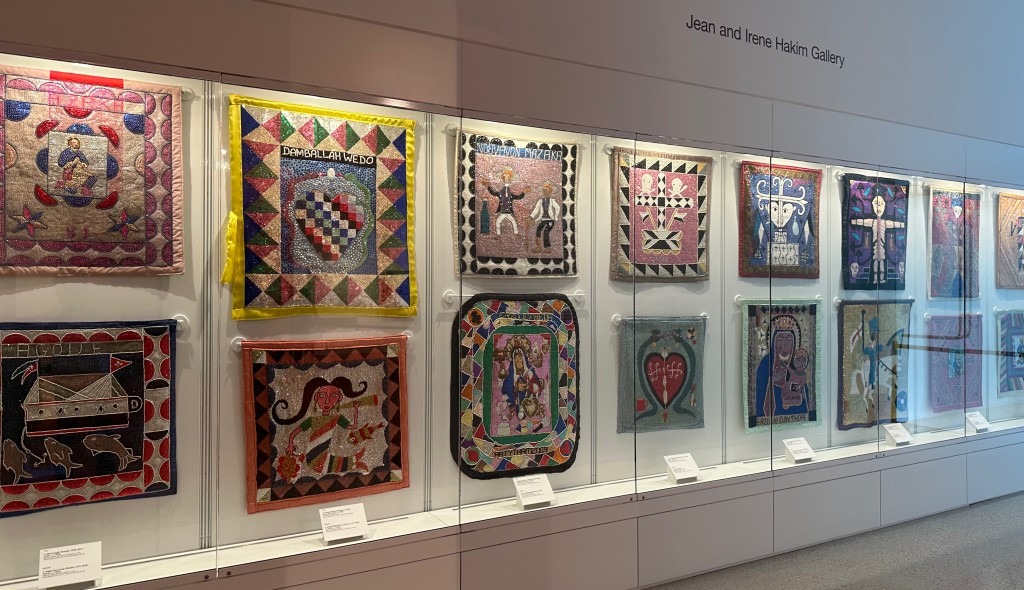
In this vein where fabric design is cultural identity, there is a collection of Haitian flags at the Tampa Museum of Art (TMA). Its collection of 135 Haitian flags is one of the largest in the U.S., a selection of which is on display in their newly expanded gallery space.
From the didactic label – “Drapo Vodou, or ritual flags, are the most celebrated of Haiti’s sacred arts. The flags reflect the creative inclusivity of Vodou, which combines and juxtaposes African symbols with those of Europe and the Americas to form a mosaic of ritual art.
“The flags are made of sequins, beads, golden ribbons, and ropes, among other things, which are hand sewn onto various types of fabric, from simple burlap to velvet and satin.”
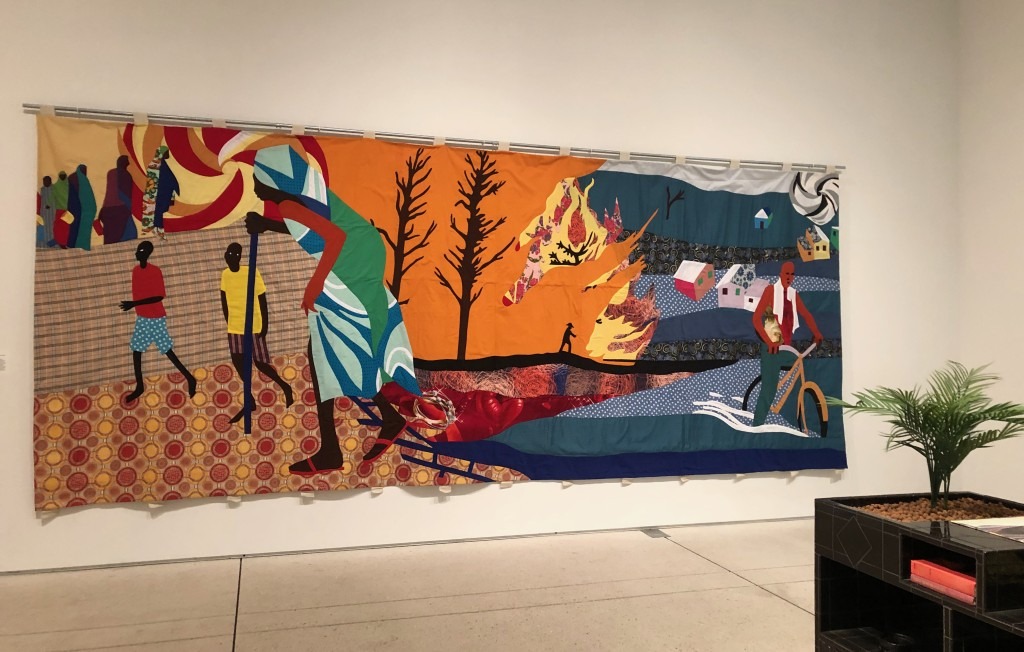
Also at TMA is Time for Change: Art and Social Unrest in the Jorge M. Pérez Collection, on view through August 27. While collection shows are in part vanity, they do present works that should be in the public sphere, bringing awareness to crucial issues that would otherwise be lost.
This collection has several fabric-based works. Two notables are How to Name a Famine, a Fire, a Flood, an appliqué tapestry by Christopher Myers depicting natural disasters due to climate change and how it impacts the most vulnerable among us.
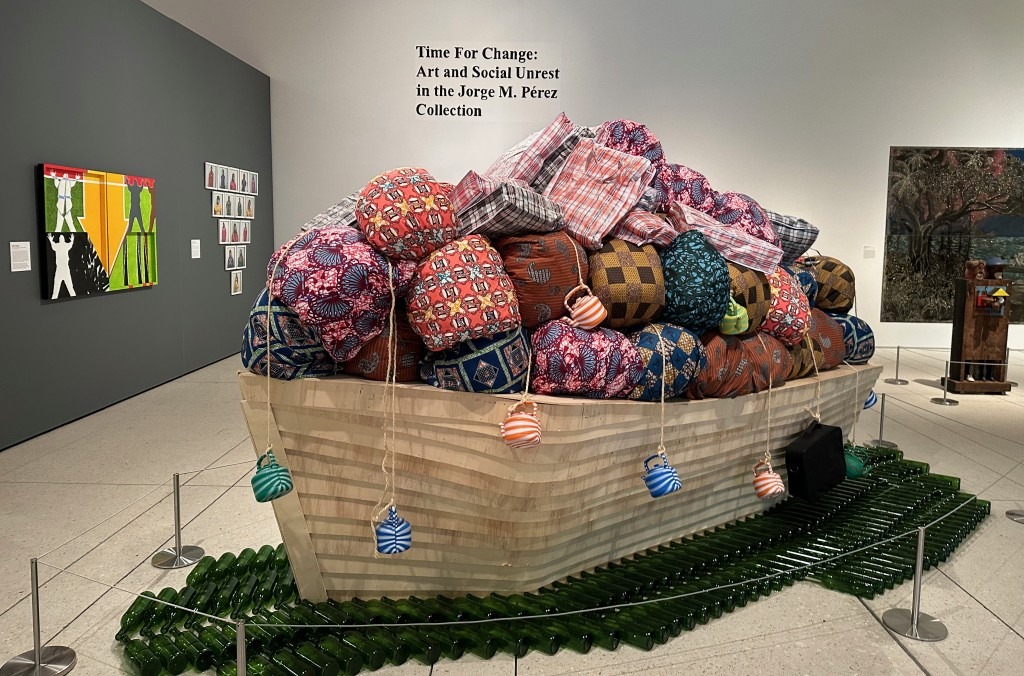
Also Barthélémy Toguo’s Road to Exile, a wooden boat filled with cloth bundles floating on a sea of green glass bottles. The cloth bundles hint at the identities of the people taking on this dangerous journeys escaping oppressive situations.
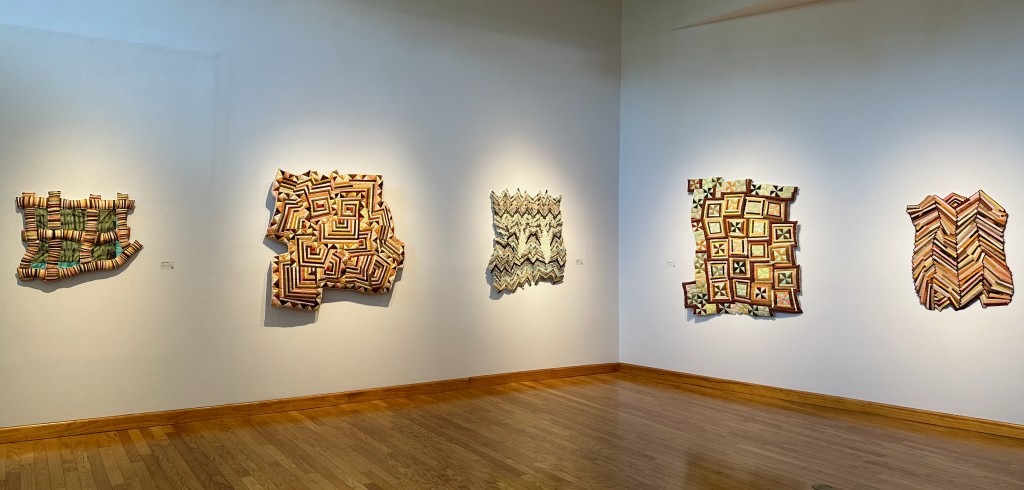
The entire Dunedin Fine Art Center (DFAC) is swathed in cloth – a celebrated embrace of all things fabric with Stitched & Dyed, a group show of ten artists, plus three solo exhibits – Regina Durante Jestrow’s Free Form Connections, Kat Howard’s Controlled Telling and Hannah O’Hare Bennett’s Recede.

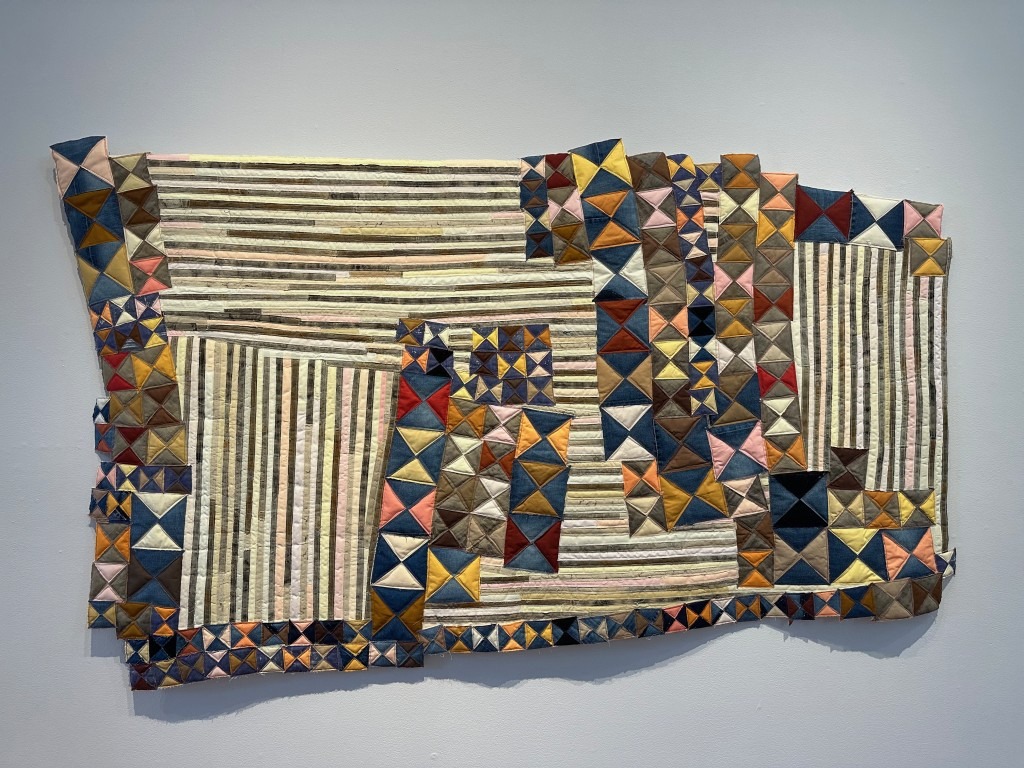
Within this is a fabric compendium, encompassing wide-ranging techniques, subject matter, styles and scale, delving into histories past and currently in the making.


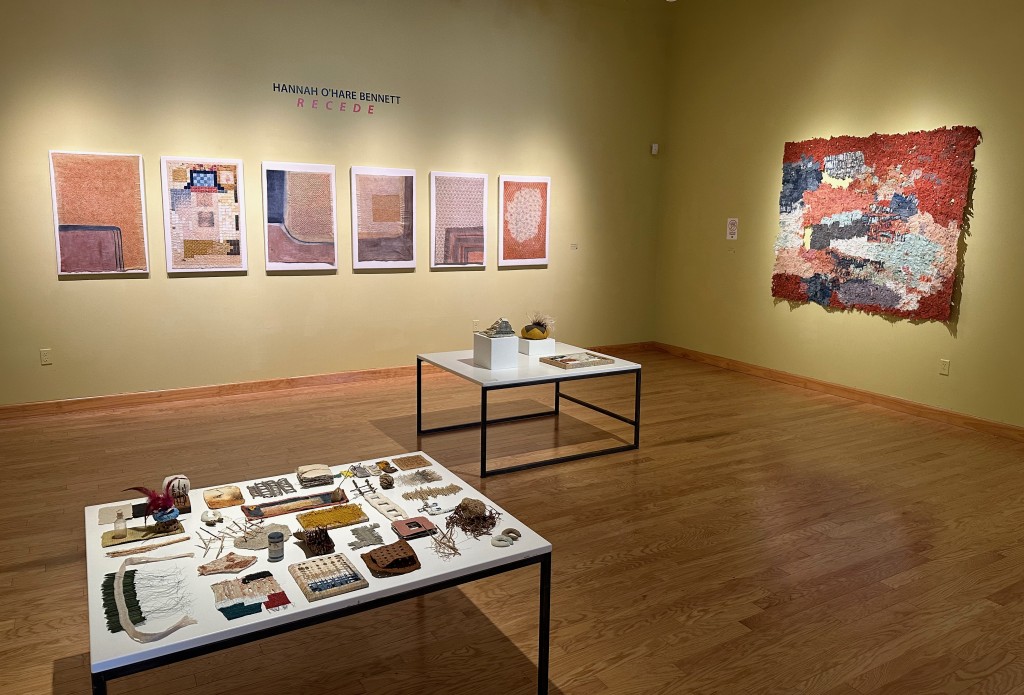


Informative didactics accompany each artist. An overall summary, if such is possible, is that in every single stitch, every fold of every single work lie unheralded moments – best expressed by Patricia Miranda, one of the artists in Stitched & Dyed – “The aggregation of individual stitches… into monumental works makes visible the untold stories of economic labor, and labor of care, in the lives of women.
“The sculptural works reference female bodies as architecture, sheltering the community under their voluminous skirts.”
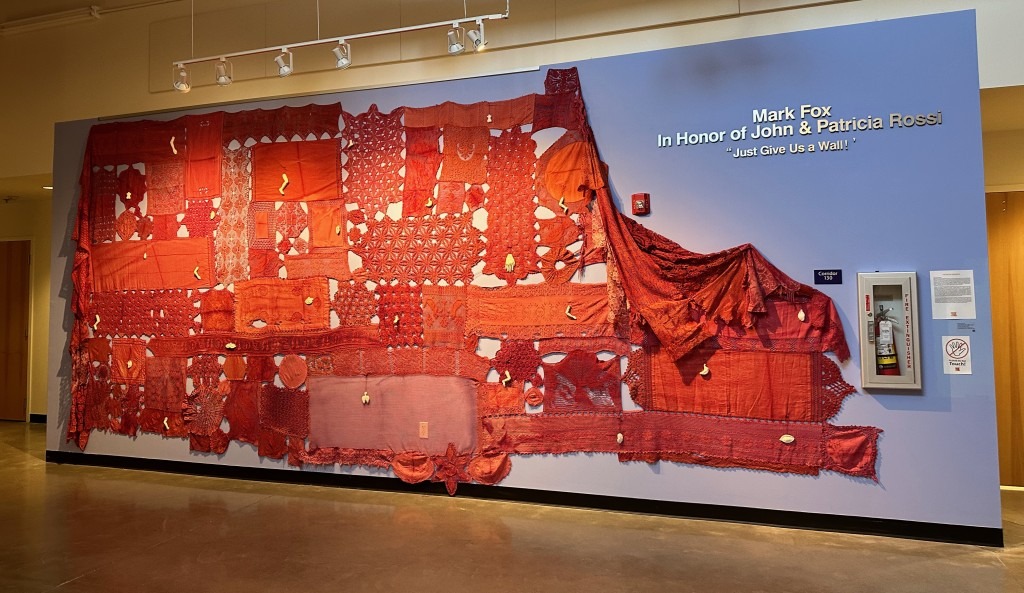

And finally, at the Orlando Museum of Art’s annual Florida Prize show – Akiko Kotani’s years of endless stitching have evolved into forms evocative of life’s many moments on a cosmic path.
And Denise Treizman‘s inventive transformation of materials gathered from society’s wastestream by weaving complex sculptural wall hangings – maybe a metaphor of all the flotsam and jetsam we gather and weave into our very temporal lives.
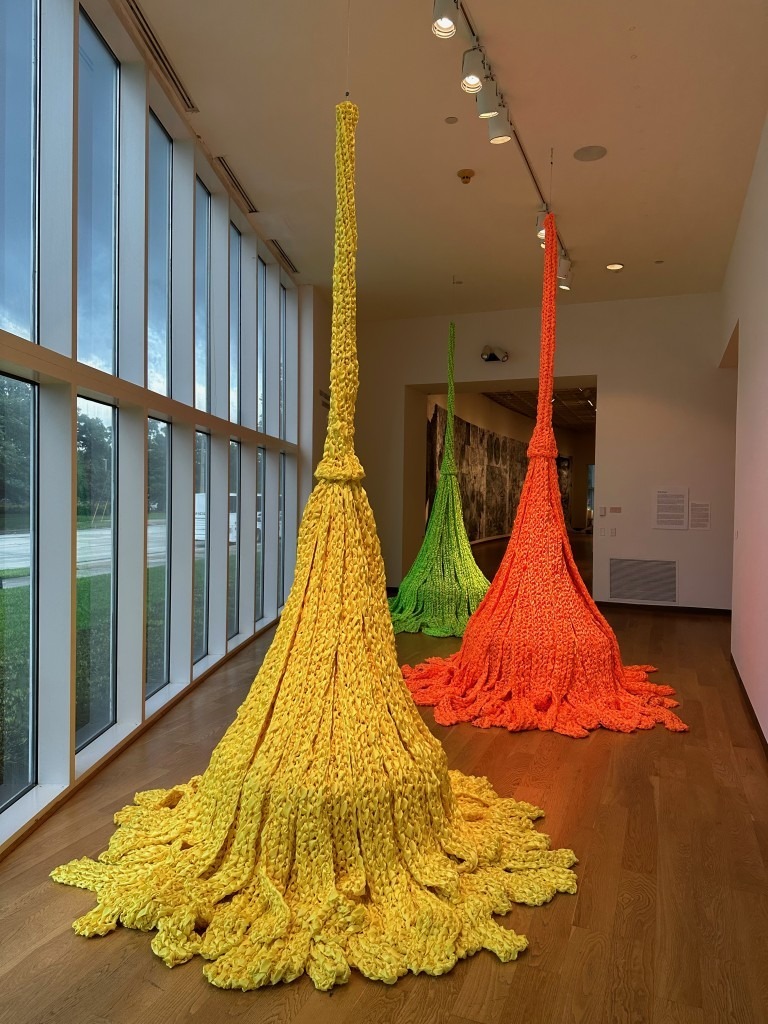
These are a few examples of fabric works now on exhibit.
In conclusion, from Hannah O’Hare Bennett’s exhibition text panel at DFAC – “From the moment we are born until we die, we are almost constantly in contact with cloth as we move through our lives.”
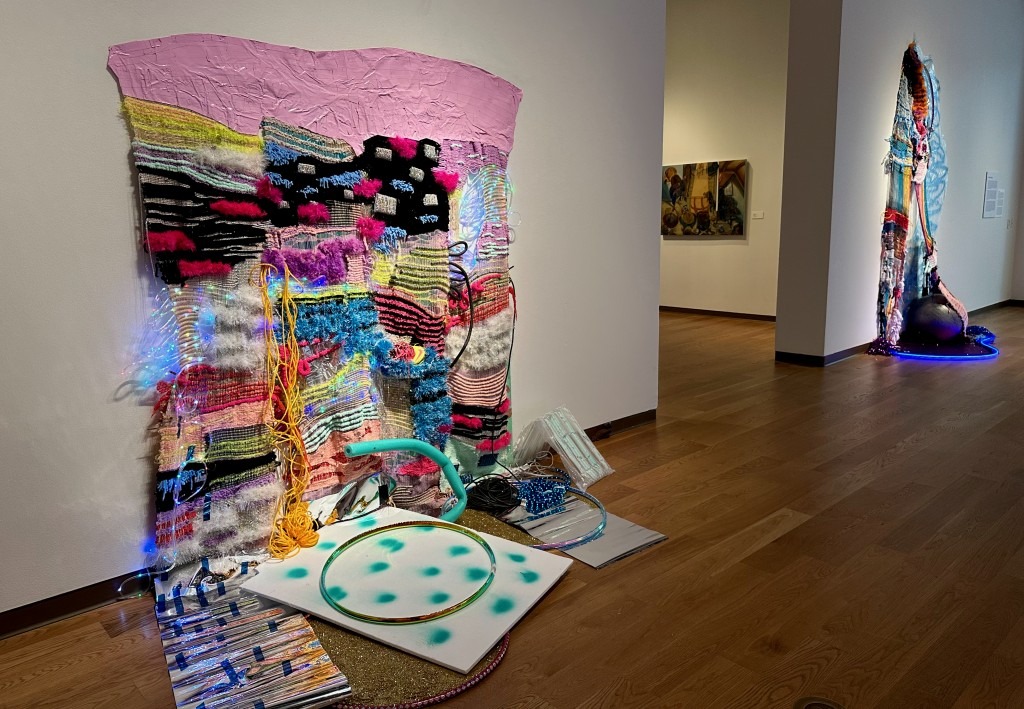
Back to that divine weaver, here are some related links. . .
- Scientists – cbsnews.com/news/spiders-may-sleep-and-dream-like-people-study-finds
- Biotech engineers – sciencedaily.com/releases/2022/07/220725105559
- Architects – architectmagazine.com/technology/arachnid-architecture-as-human-shelter_o
- Medical science – news-medical.net/life-sciences/Role-of-Spider-Silk-in-Biomedicine
- Art – Tomás Saraceno’s spider web installation, Free the Air: How to hear the universe in a spider/web theartnewspaper.com/2022/02/22/tomas-saracenos-spiders-webs-the-shed
